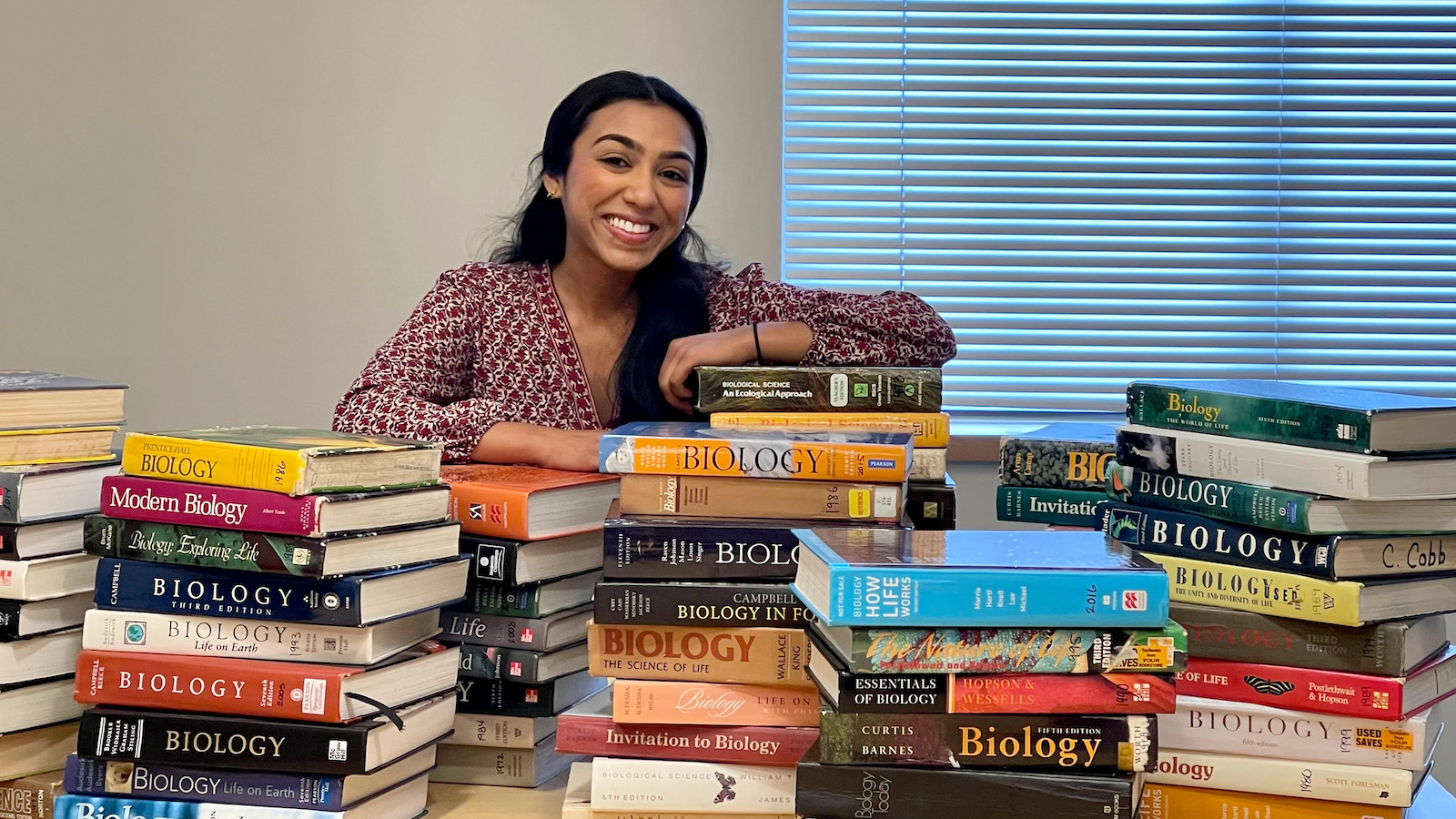With every year that greenhouse gas emissions continue to rise, the climate crisis deepens — as does the threat it poses to life on Earth. But that increasing urgency isn’t reflected in many of the U.S.’s undergraduate biology textbooks.
According to a new paper published Wednesday in the journal PLOS ONE, climate change coverage in college biology textbooks has failed to keep pace with our scientific understanding of the issue or its mounting importance for every living organism on the planet, from single-celled algae to blue whales. Although today’s textbooks contain more sentences on climate change than those from the 1970s, these sentences offer fewer solutions and have been pushed toward the back of the book — where they are likely to be skipped over.
“Why are we still ignoring this issue?” asked Jennifer Landin, a teaching associate professor at North Carolina State University and an author of the paper.
Landin and a coauthor looked at 57 of the most widely used undergraduate biology textbooks published between 1970 and 2019. They analyzed each book’s climate change coverage for length and content — the fraction of sentences used to describe the physical processes of climate change, its impacts on the world’s ecosystems, and ways to address it. They also looked at the textbooks’ changing use of charts and figures.
The good news, Landin said, was that climate coverage has increased since the 1970s and ‘80s, when college biology textbooks only dedicated about 11 sentences to the issue. By the 2000s, textbooks were covering climate change with a median of 51 sentences.
However, this number dropped in the 2010s to 45 sentences — “basically two pages of a Harry Potter paperback,” Landin said. This means most of the college biology textbooks published in the past decade have actually shortened their climate coverage since the 2000s, despite a more than three-fold increase in the number of scientific articles published on climate change during that time.
Biology textbook writers also seem to be pushing climate change coverage further toward the back of their books. They were already leaving it for the last 15 percent of pages in the 1970s, but according to the new study, by the 2010s climate coverage had been relegated to the last 3 percent of pages. This fits a long-term trend where publishers stick controversial topics like evolution toward the back of their textbooks. It’s significant, Landin said, because research suggests most professors progress chronologically through their textbooks — so anything at the end may be glossed over or skipped altogether.

Joseph Henderson, an associate professor of environment and society at Paul Smith’s College who wasn’t involved in the research, said the study was interesting but that textbooks are only one piece of the education puzzle. “They could be doing a better job with biology textbooks,” he said, but it’s important to also think about whether and how teachers are actually using them.
“This paper and textbooks are a representation of the broader problem,” Henderson explained, “which is that education has been really slow on the uptake in terms of climate education,” especially when it comes to anything that could be perceived as political. Landin’s paper notes that not one of the textbooks published since 1970 mentioned several politically sensitive but high-impact individual or local actions to address climate change, such as changing one’s diet or building more energy-efficient housing. If individual solutions were mentioned at all, they mostly described relatively ineffective behaviors like recycling and turning off lights.
Large-scale intergovernmental agreements like the 1997 Kyoto Protocol — in which more than 150 countries committed to reducing their greenhouse gas emissions — got more coverage than individual actions in textbooks across the decades. Henderson called this a good thing, since the sphere of international policy is where the farthest-reaching changes can be made. But students will likely need an education in other fields like political science and history to better understand those agreements and learn how to push for more ambitious ones. “Climate change education has to be interdisciplinary,” Henderson said.
One beacon from Landin’s research came from her figure analysis. She found that, between the 1990s and 2010s, climate-related data visualizations more than doubled, expanding beyond charts that show rising CO2 levels to also include photographic evidence of glacier melt and maps of species migrations.
This is the kind of progress Landin would like to see more of. She wants textbook editors to expand not just the data visualizations, but also the length of textbooks’ climate chapters. Publishers could put climate coverage earlier in textbooks, she suggested, and help students draw connections across all biology topics — like cellular anatomy, by showing how plants’ chloroplasts pull planet-warming carbon out of the atmosphere. And expanding high-impact solutions content could inspire change while combating young people’s climate anxiety.
“We’re seeing all these problems but we’re not given clear actions to take power over them,” Landin said. “There are clear and well-understood solutions that we simply need to educate young people about.”



